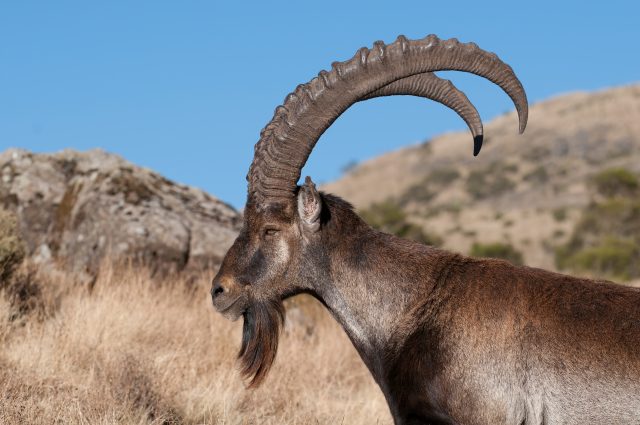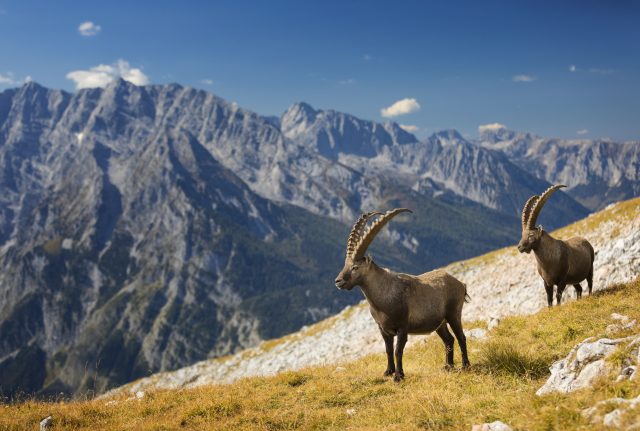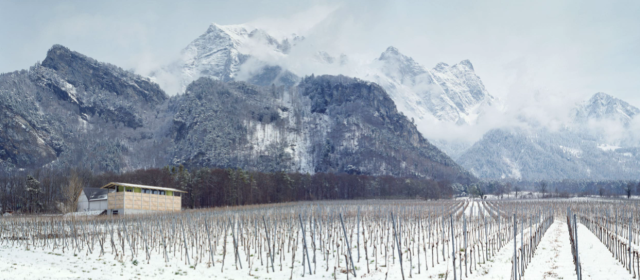This website uses cookies so that we can provide you with the best user experience possible. Cookie information is stored in your browser and performs functions such as recognising you when you return to our website and helping our team to understand which sections of the website you find most interesting and useful.
What can the Alpine ibex teach winemakers?
Changing behaviour of the ibex mountain goat, which lives in the Alps, reveals an “ominous sign” about climate change, say scientists.

Alpine ibexes have roamed the rough, steep terrain of the European Alps for thousands of years, making their homes as high as 3,300 m (10,800 ft).
Their natural habitat spans mountainous territory in France, Switzerland, Liechtenstein, Italy, Germany and Austria, and the species moves from vertiginous slopes in the winter to graze Alpine meadows during the summer.
However, new research published in biological research journal Proceedings of the Royal Society B, has revealed a worrying trend that could also spell trouble for winemakers in Alpine countries.
According to the study, carried out by two educational institutions in Italy (University of Sassari and the University of Ferrara), the ibex is becoming increasingly nocturnal. Instead of feeding during the day, the animal is spending more time forraging at night, something it only typically does following exceptionally hot weather.
“Ibex cope with warmer temperatures by becoming more nocturnal,” the study explains.
It could be bad news for the ibex as their main predator, the wolf, hunts at night, making the ibex more vulnerable to becoming prey, which could in turn lead to the population shrinking. It is also likely to make finding food harder for the species as the eyesight of the ibex has not yet evolved towards nocturnal vision.
“For this species, to be nocturnal is a problem — it’s a big problem,” said Stefano Grignolio, one of the authors of the study and assistant professor at the University of Ferrara.
What could this mean for wine?

It is not only the ibex that could be at risk from the warming mountains.
Temperatures in the Alps are expected to climb by several degrees by the end of the century, according to environmental reporter Benji Jones, and this will have an inevitable impact on winemakers.
It has been well documented that winemakers around the world are planting at higher altitudes to escape the effects of climate change. However, the ibex study suggests that even at extreme altitudes the temperatures are getting higher.
It could also prove problematic for indigenous Alpine grapes championed by the likes of Italian wine producer Mezzacorona, who makes wine from red grape Teroldego Rotaliano.
The variety, which according to Mezzacorona gives “a rich palate of wild blackberries, redcurrants and violets against dense tannins and a backbone of spice” is found in the Teroldego Rotaliano DOC in northern Italy, which sits inside a valley corridor stretching from Lake Garda to Alto Adige’s Alpine hills.
Rising temperatures in the Alps could mean that such local grape varieties could be increasingly at risk, though the mountainous backdrop does a good job of protecting the grapes for now.
Similarly, warmer mountains could have implications for Austrian Sauvignon Blanc, which is the nation’s most popular grape after Grüner Veltliner. In 2021 there were approximately 1,691ha planted to Sauvignon Blanc in Austria.
Described by Chris Yorke, managing director of the Austrian Wine Marketing Board, as “conquering the middle ground between the aromatic Marlborough and the taut and mineral Sancerre style”, Austria’s Sauvignon Blanc is largely found in Styria, where the highest mountain reaches 2,995 metres high amidst an alpine landscape.
It is only recently that Styria’s producers have really begun to understand how best to manage Sauvignon Blanc on their steep slopes, where warm temperatures are regularly punctuated by rainfall. However, if the climate continues to grow hotter then adjustments will need to be made and a new blueprint drawn up for managing viticulture in the region.

Furthermore, we are entering a crucial time for Swiss fine wine, with Switzerland making a strong return to the Liv-ex Power 100 fine wine report (released in December 2023). The nation featured on the list for the first time in at least six years, highlighting the enormous potential the nation has for crafting top-drawer expressions.
The entry from Swiss producer Gantenbein, located in the village of Fläsch, impressed merchants by hitting an average trading price of £1,992. Planted on steep Alpine slopes in the Graubünden region in southeast Switzerland, Gantenbein’s vineyards benefit from the region’s unique microclimate, which it will be keen to protect. The tiny subregion (and AOC) of Graubünden is surrounded by Alpine peaks that climb above 4,000m in elevation.
Gantenbein is already committed to organic and biodynamic viticulture in a bid to safeguard its terroir for future generations, but its winemaker may need to make some tough decisions if temperatures rise significantly in the area.

